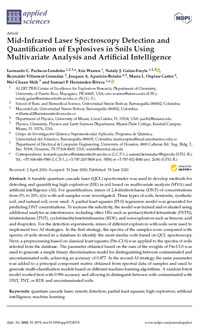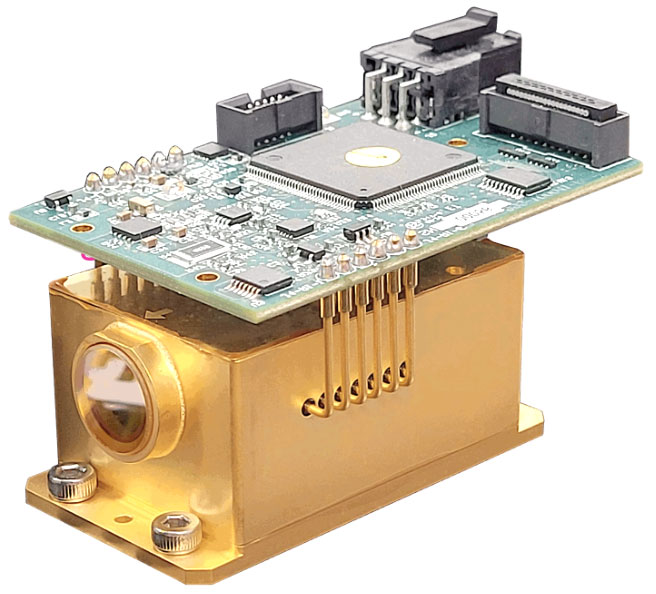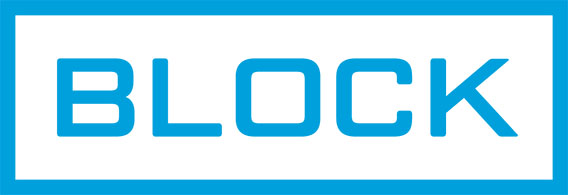Research Paper Spotlight: Identifying Explosives in Soil using Quantum Cascade Lasers
 The original research paper highlighted below, "Mid-infrared laser spectroscopy detection and quantification of explosives in soils using multivariate analysis and artificial intelligence," can be found at the MDPI site: [external PDF link].
The original research paper highlighted below, "Mid-infrared laser spectroscopy detection and quantification of explosives in soils using multivariate analysis and artificial intelligence," can be found at the MDPI site: [external PDF link].
The detection of explosives residue is a crucial part of clean-up operations around military bases, mines, and demolition sites. Dr. Leonardo C. Pacheco-Londoño at the Universidad Simón Bolivar in Columbia and his team recently conducted an experiment to measure these hazardous chemicals using quantum cascade laser spectroscopy. Below is a summary of their results.
Both mining activities and military training operations often use high explosives such as DNT, RDX, and TNT. When explosion activities are complete, the explosive chemical residue may remain for a long time within the environment, polluting soils and creating a toxic threat to humans.
 Detection of explosive chemicals in soil is very challenging, due to the complex organic chemical mix present in common soils. Current detection methods include gas chromatography-mass spectroscopy (GC-MS), high-pressure liquid chromatography (HPLC), and ion mobility spectrometry (IMS). However, these methods are generally slow and typically take place in a lab setting.
Detection of explosive chemicals in soil is very challenging, due to the complex organic chemical mix present in common soils. Current detection methods include gas chromatography-mass spectroscopy (GC-MS), high-pressure liquid chromatography (HPLC), and ion mobility spectrometry (IMS). However, these methods are generally slow and typically take place in a lab setting.
In this paper, Dr. Pacheco-Londoño and colleagues used quantum cascade laser spectroscopy to scan for the presence of explosives in three different soil types. They were able to accurately detect DNT and other chemicals in seconds from approximately 15 centimeters away.
The team began by creating several soil types, including a synthetic soil comprised of sea sand, cement, and other components; bentonite clay; and natural soil sourced from two separate locations in Puerto Rico.
They created blended mixtures of the explosive DNT at concentrations of 0% to 20%. They also created samples that included RDX, PETN, and TNT, as well as non-explosive chemicals such as benzoic acid and ibuprofen.
Using a spectrometer powered by quantum cascade lasers from Block Engineering, the team then attempted to detect the presence of explosive chemicals in each mix. To gather spectra, they focused on the mid-infrared region of 1000 to 1600 cm-1.
 Drawing on Self-Simulated Learning Artificial Intelligence (SSLAI) to develop Machine Learning (ML) models, the researchers were able to classify almost all samples of the explosives with an accuracy score as high as 99.6%. They specifically cited the benefit of quantum cascade lasers in the remote detection of explosives in soil.
Drawing on Self-Simulated Learning Artificial Intelligence (SSLAI) to develop Machine Learning (ML) models, the researchers were able to classify almost all samples of the explosives with an accuracy score as high as 99.6%. They specifically cited the benefit of quantum cascade lasers in the remote detection of explosives in soil.
Block’s lasers are currently being used in a wide variety of chemical detection applications, including identification of toxic industrial chemicals and chemical warfare agents. If you are interested in learning more about our QCLs, please contact us for information.

